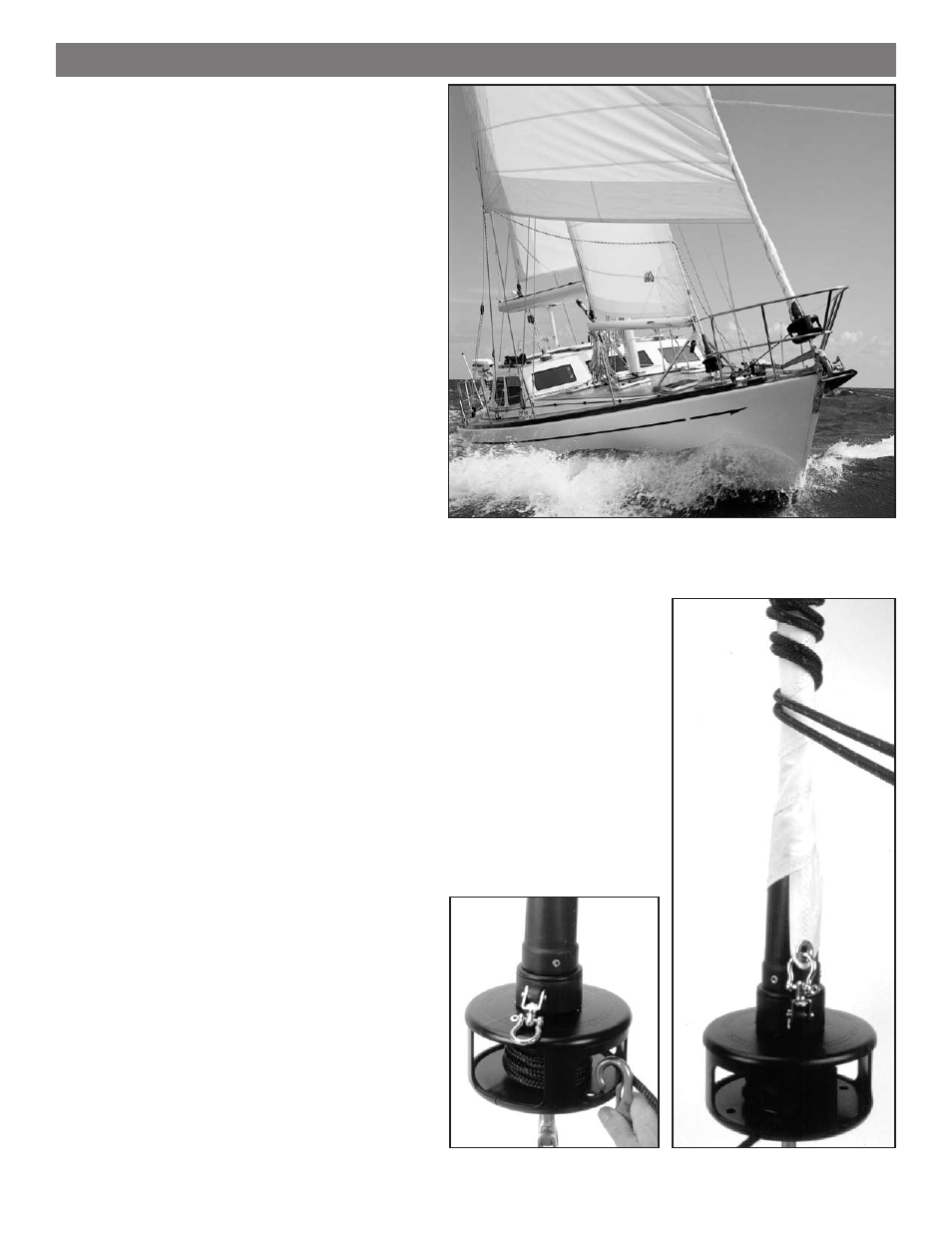Operation – Harken 882 MKIII Jib Reefing & Furling User Manual
Page 66

Operation
Reefing • Leaving Your Boat
February 2000
Unit 1 MKIII
33
■
Reefing
A sail may be partially furled before you resume
sailing. This is known as reefing.
Many sailors find it helpful to place marks on the
foot of the sail so that they can reef to a variety of
predetermined jib sizes. This allows marks to be
placed on the jib lead tracks or toe rail so that lead
block position can be changed to correspond to the
reefed jib.
Your system is provided with a "locking" device that
can be used to lock the unit while reefed or when
leaving the boat unattended at the dock or mooring.
To lock the unit in a reefed or furled configuration,
align the holes in the bottom of the drum and basket
and insert a shackle or pin. Use of the lock removes
tension from the furling line and prevents accidental
release of the line which could expose a full sized
genoa to heavy winds.
Use of the lock while reefed requires that you go
onto the foredeck after reefing and again before the
sail can be reefed further or unreefed. Since one
purpose of a reefing system is to allow you to
change sail size while remaining in the safety of the
cockpit, many people will choose not to use the lock-
ing device. Use of the locking device is not required
during reefing.
Sails are generally reefed to balance the boat and to
reduce heeling moment. Sails may also be reefed to
improve visibility or to slow the boat while sailing in
congested areas or while entering or leaving harbors.
■
Leaving Your Boat
When furling prior to leaving your boat in the slip or
on the mooring, be sure that you get a tight furl and
to continue furling the system until the sheets wrap
around the rolled sail two or three times. Some peo-
ple like to secure the sail with shock cord or sail ties.
Be sure to securely cleat the furling line to a standard
horn cleat.
You may also lock your system by aligning the holes
in the bottom of the drum and the basket and insert-
ing a shackle or padlock.
Be sure that mooring lines are not placed across the
furling line where they may cause chafe.